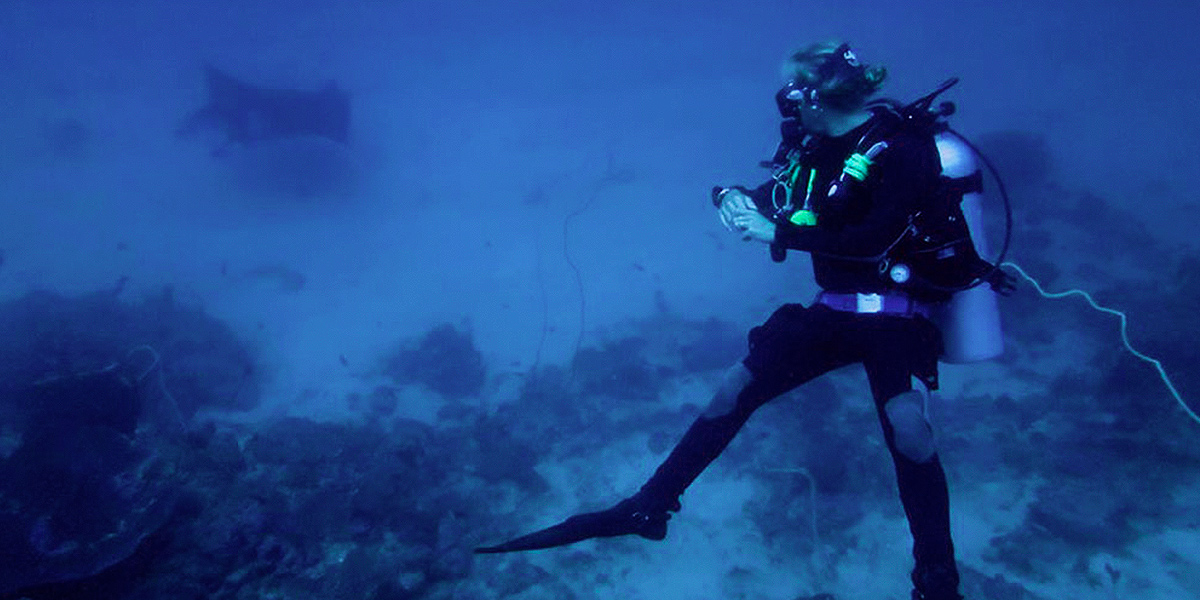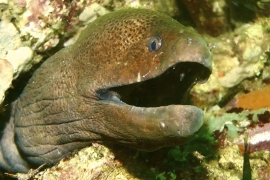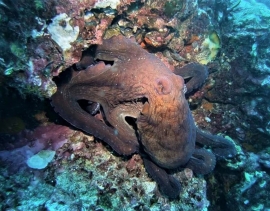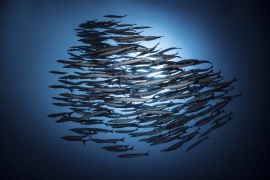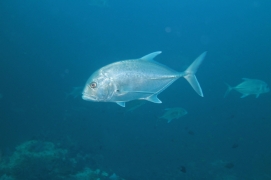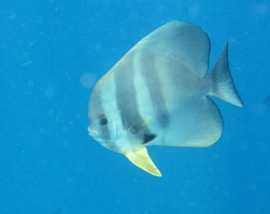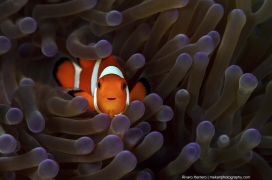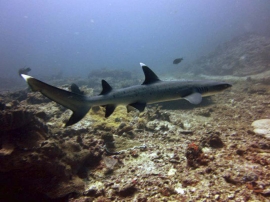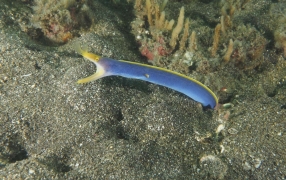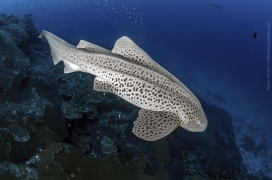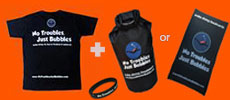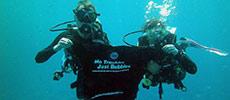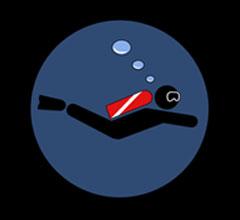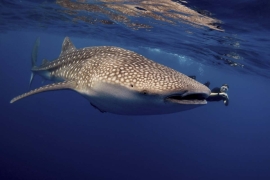
Mergui Archipelago Liveaboard Diving
The mostly-unexplored 800+ islands of Myanmar's Mergui Archipelago are many divers' dream destination. Although the logistics of getting there are not easy, the location is not remote, less than 500 kilometres from Bangkok. But the challenging logistics have contributed to the untouched & unexplored aura that Mergui has. Connected to The Bay of Bengal, and therefore part of The Indian Ocean, Mergui has diverse and abundant marine life, that comes in all shapes and sizes. Getting there nearly always requires travelling through the south of Thailand, normally to board in or near Ranong.

The Mergui Archipelago is also known as the Myeik Archipelago, in southern Myanmar, also known as Burma. Mergui & Burma are the colonial names, whereas Myeik & Myanmar are the new/official names. For thousands of years, these islands have been home to abundant and diverse marine life, only seen by the indigenous people who live off the sea.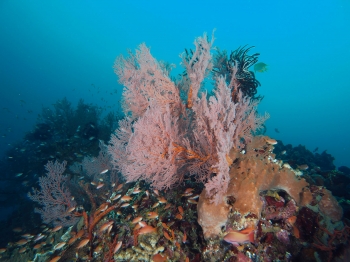 Fans and corals - Credit Johan Folmeus These 'Moken Sea Gypsies' still inhabit some of the islands of Mergui as well as The Surin Islands in Thailand. Then in the middle of the 20th century, the country was cut off from most of the rest of the world. But in recent years the number of dive operators offering liveaboard diving trips into Burma has slowly increased. The most common point of boarding and entry is where the coasts of Myanmar and Thailand meet, at Ranong or Phang Nga, in Thailand. It is then just a very short trip into Myanmar to stamp documents at the local immigration office before sailing off into this vast and wonderful archipelago. New dive sites are still being discovered and explored all the time, and this will continue for years to come. There are dozens of dive sites, which include caves, swim-throughs, currents and vertical walls. The liveaboard diving offers a mixture of ok to fantastic visibility, gentle to strong currents, easy to challenging dive sites, and seahorses & nudibranchs to pelagic sharks & rays. There really is something for everyone, and what makes it better is the lack of other dive boats for as far as the eye can see. The low number of other liveaboards adds to the special feeling of diving in Mergui. And the reason for there not being many boats is mainly due to the bureaucracy & logistics of getting there.
Fans and corals - Credit Johan Folmeus These 'Moken Sea Gypsies' still inhabit some of the islands of Mergui as well as The Surin Islands in Thailand. Then in the middle of the 20th century, the country was cut off from most of the rest of the world. But in recent years the number of dive operators offering liveaboard diving trips into Burma has slowly increased. The most common point of boarding and entry is where the coasts of Myanmar and Thailand meet, at Ranong or Phang Nga, in Thailand. It is then just a very short trip into Myanmar to stamp documents at the local immigration office before sailing off into this vast and wonderful archipelago. New dive sites are still being discovered and explored all the time, and this will continue for years to come. There are dozens of dive sites, which include caves, swim-throughs, currents and vertical walls. The liveaboard diving offers a mixture of ok to fantastic visibility, gentle to strong currents, easy to challenging dive sites, and seahorses & nudibranchs to pelagic sharks & rays. There really is something for everyone, and what makes it better is the lack of other dive boats for as far as the eye can see. The low number of other liveaboards adds to the special feeling of diving in Mergui. And the reason for there not being many boats is mainly due to the bureaucracy & logistics of getting there.
Which areas you can visit for scuba diving in Burma's Mergui Archipelago depends on the length of your trip. Shorter trips tend to stay nearer to the mainland, and longer trips have time to venture further out to sea.
Dive Sites in Mergui Archipelago
High Rock is one of the most popular dive sites in Myanmar's Mergui Archipelago. It's not too far from the mainland, making it a common 'first-day dive site' for many Burma liveaboard diving safaris. It's a small rocky islet with a tree on top. Below the surface, you can enjoy wall and reef diving, down to 30 metres or more. Lots of reef fish live here and many predatory species visit.
Conditions at Mergui Archipelago
When to dive at Mergui Archipelago
This area is the northeast corner of The Indian Ocean and therefore is affected by the monsoon seasons. From May to October, unpredictable winds & waves make sailing unsafe. Trips start in November, but the best months are December to April. Larger pelagic sharks and rays are more often seen from late February until the end of April.
What type of dive site is Mergui Archipelago
Myanmar's Mergui Archipelago has a wide range of dive sites, from macro & muck diving with reduced visibility, to open sea diving at Burma Banks in the hope of seeing pelagic sharks. Most dive sites are coral reefs around the granite or limestone islands.
Where is Mergui Archipelago?
Mergui is in the south of Myanmar on the west coast, facing out to The Bay of Bengal. Starting from the border with Thailand in the south and as far north as the port town of Myeik.
How to get to Mergui Archipelago
The only way to properly enjoy diving in Mergui is by liveaboard diving safari. There are one or two resorts in the country that may offer day-trip diving excursions, but nearly all the diving is done from liveaboard boats that start and end trips in Thailand. If you are already in Myanmar for the start of your trip, it's usually possible to join a liveaboard cruise at Kawthoung, just after the boat crosses the border.
Who can dive at Mergui Archipelago
There are no fixed minimum requirements for your certification or experience, but in reality it's important to have 50 dives' experience, and to be certified to 30 metres. This is in order to properly enjoy all of the dive sites without limiting the enjoyment of your dive buddies.
What marine life can you see at Mergui Archipelago?
The marine life you can expect to see when diving in Myanmar's Mergui Archipelago is extremely diverse. There are small critters, such as seahorses and nudibranchs for macro lovers. There are lots of schooling reef fish, including barracuda. Plus large pelagic sharks and rays are often seen here as well. This includes some that are not seen at Thailand's dive sites, normally because they're shy or usually found in or near very deep water.
Summary of Mergui Archipelago
Diving in Burma's Mergui Archipelago involves bureaucratic & logistical challenges, which are the main reasons why this place is still special and relatively unexplored. There are dozens of regularly-visited dive sites, but with more than 800 islands, it's clear that there are more diving location yet to be discovered. The only way to get there is by liveaboard diving safari, and the trips are usually 6-9 days in length. One thing's for sure, and that's anyone lucky enough to visit the area for scuba diving will enjoy the peaceful feeling of being on the only boat, or one of just a few other boats, for miles in all directions.
